
Among all the genres of Vietnamese traditional music, only Hue Royal Court Music is sophisticated and elegant enough to be worthy of the national stature. The Music of the Royal Court of Hue emanates a majestic symphony, encapsulating centuries of cultural refinement and regal sophistication. Allow Asia King Travel to take you to a bygone era of cultural grandeur and artistic elegance in Vietnam Royal with this guide.
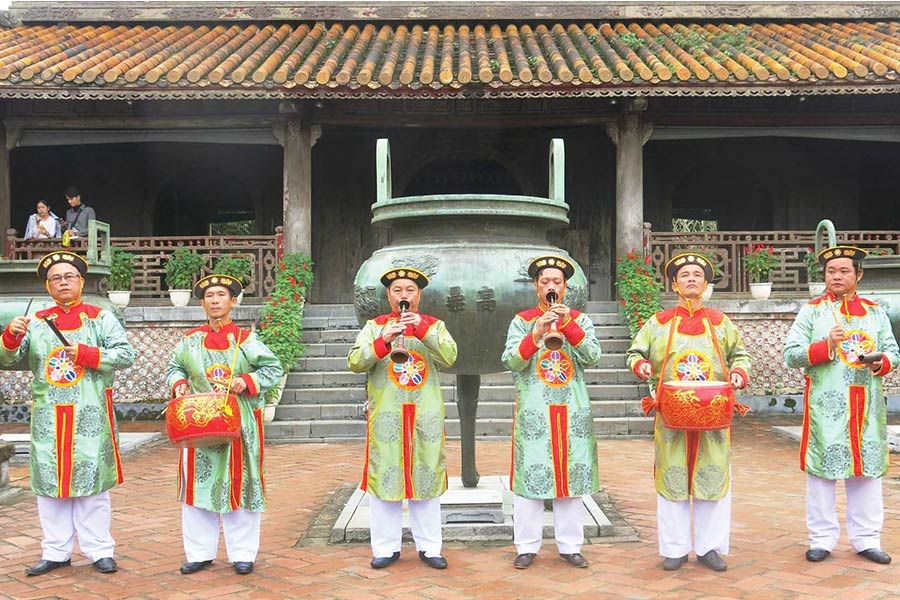
Hue Royal Court Music is an UNESCO Heritage of Vietnam
Hue Court Music, or "Nha nhac Cung dinh Hue", is a World Cultural Heritage recognized by UNESCO and an integral part of Vietnam's cultural legacy, reflecting the grandeur and refinement of the imperial court in Hue, the country's former capital. With a focus on elegance and sophistication, "Nha nhac', which means "elegant music", embodies the cultural amalgamation of Confucianism, Buddhism, and indigenous beliefs, creating a unique sonic tapestry.
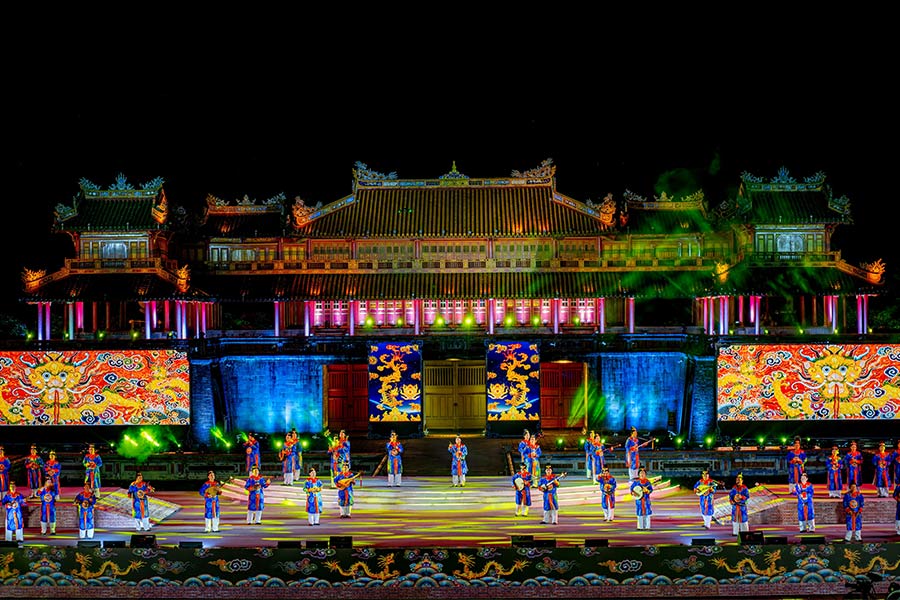
Hue Royal Court Music played a crucial role in various court rituals
Emphasizing precision and grace, the musicians underwent rigorous training, passing down their expertise through generations. Hue Court Music not only served as a form of entertainment but also played a crucial role in various court rituals, showcasing the social hierarchy of the court.
The origin of Court Music was formed in the 13th century, but it only reached its zenith until the Nguyen Dynasty, which ruled Vietnam from 1802 to 1945 with its capital in Hue. During this period, the imperial court fostered a sophisticated cultural environment, blending indigenous traditions with influences from China and other neighboring regions. This art form was elevated to new heights of refinement and complexity, becoming an integral part of courtly life.

The Nguyen emperors were patrons of the arts and actively promoted the development of music
The Nguyen emperors were patrons of the arts and actively promoted the development of music and other cultural expressions within the court. They established formal training programs for musicians and composers, leading to the creation of a distinctive repertoire of court music that reflected the dynasty's power and prestige.

The art only reached its zenith until the Nguyen Dynasty
Despite the decline of the Nguyen Dynasty and the tumultuous events of the 20th century, efforts have been made to preserve and revive Hue Court music as a symbol of Vietnam's rich cultural heritage. Today, it continues to be performed and appreciated both within Vietnam and on the international stage, serving as a reminder of the country's imperial past and artistic achievements.
There are two subtypes of Hue royal court music: "Dai Nhac" and "Tieu Nhac." In religious ceremonies, coronations, and funerals, "Dai Nhac" is performed with a sizable orchestra of over 40 different types of wind, string, and percussion instruments. "Tieu Nhac" is typically done on a lesser scale during royal banquets, official receptions, and anniversaries. Many royal dances come along with the music, with the overall theme of honoring kings and gods and wishing prosperity to the nation.
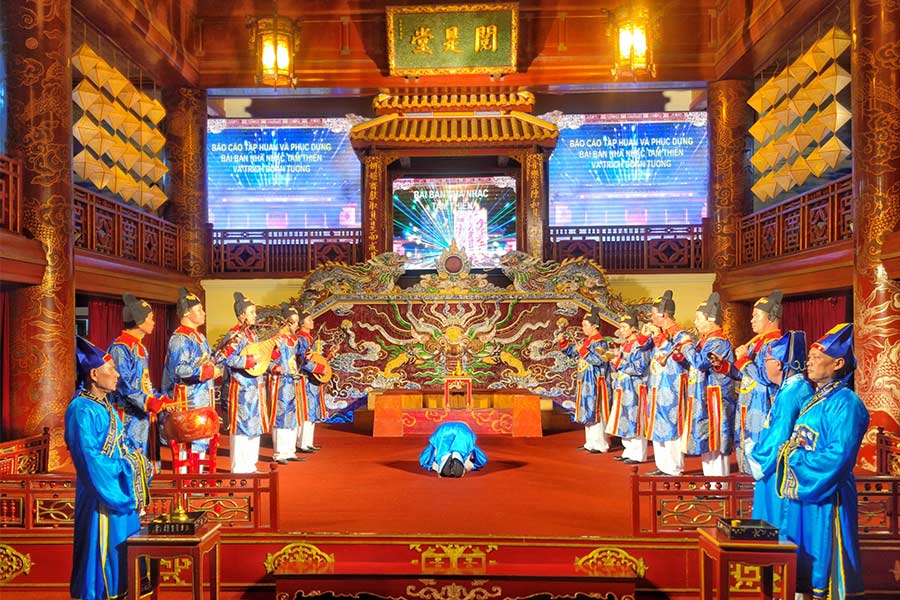
The performance of this music art also often combines traditional court rituals and customs
One prominent feature of a Hue Court Music performance is its meticulous attention to detail. Each aspect, from stage decoration to instrument arrangement and performers' attire, is carefully curated to evoke an ambiance of reverence and elegance. Another distinguishing feature is the incorporation of traditional court rituals and customs into the performance. This may include ceremonial processions, symbolic gestures, and the observance of hierarchical protocols, reflecting the hierarchical structure and cultural significance of the Nguyen Dynasty court.
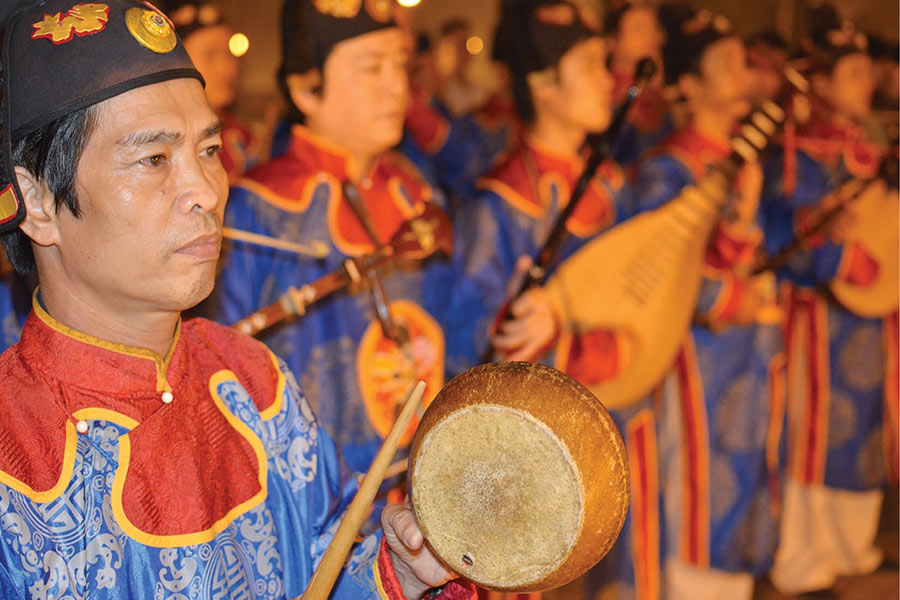
The musicians and vocalists are all professionally trained
A variety of instruments must work in perfect harmony to produce a successful musical performance. These include string instruments such as “dan ty ba” (pear-shaped lute with four strings), “dan nguyet” (moon-shaped two-string lute), “dan nhi” (two-string vertical fiddle), and wind instruments like the "sao" (bamboo transverse flute) and "ken bau" (conical oboe). The drum is the focal point of the orchestra, and all the performers have to remain extremely focused to follow every part precisely.
To be on the stage to perform Hue Court Music, musicians and vocalists have had to undergo rigorous training to master their craft. Their virtuosity and dedication to preserving traditional techniques contribute to the authenticity and quality of the performance, ensuring a captivating and memorable experience for audiences.
You may like: Hue Tour 3 days: Journey into Vietnam's Historic Heartland
Hue is still the best place to enjoy the Hue Royal Court Music. Coming to this land, you can consider these locations as spots where you can watch qualified Hue Royal Court Music performances.

Duyet Thi Duong Theater is a popular place that hosts host regular performances of Hue Royal Court Music
Duyet Thi Duong Theater: The Duyet Thi Duong Theater, also known as the Royal Theatre, is a historic performance venue located within the complex of Hue Imperial City. Built during the Nguyen Dynasty, it served as a prominent center for royal entertainment and cultural events. Today, the place continues to host regular performances of traditional Hue Court Music and other cultural events, offering visitors the opportunity to experience the heritage in an authentic setting.
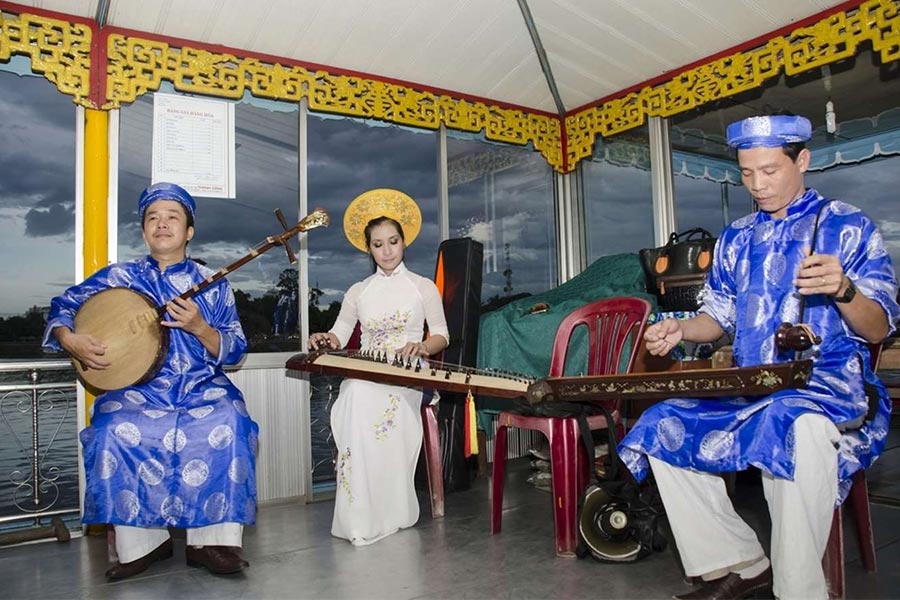
Listening to Hue Royal Court Music on a boat floating on the Perfume River is a romantic way to enjoy the art
On Perfume River: Enjoying Hue Royal Court Music on the Perfume River offers a serene and enchanting experience, combining the elegance of traditional music with natural beauty. Visitors can embark on a leisurely boat cruise along the Perfume River, soaking in the picturesque scenery while being serenaded by live performances of Hue Court Music, adding romance to the journey.
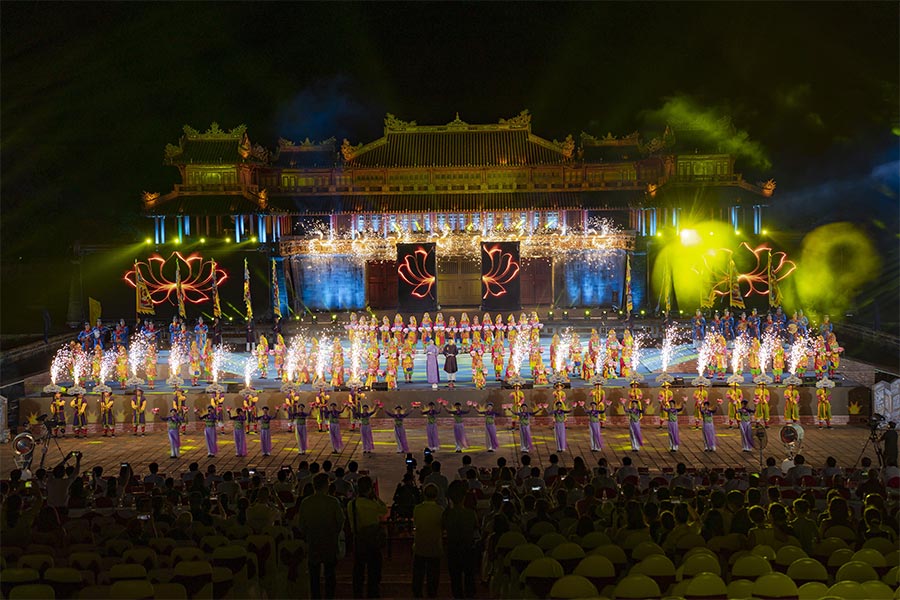
Hue Festival is the big event of the province with the Hue Royal Court Music as one of the key components
Hue Festivals: Held biennially in Hue, the Hue Festival is a celebration of the city's cultural heritage, featuring a diverse array of performances, including Hue Court Music, which is one of the key components of the event's cultural programming. During the festival, visitors have the opportunity to enjoy music and dance performances featuring professional musicians and ensembles at some venues, such as the Hue Imperial City and Ngo Mon Square.
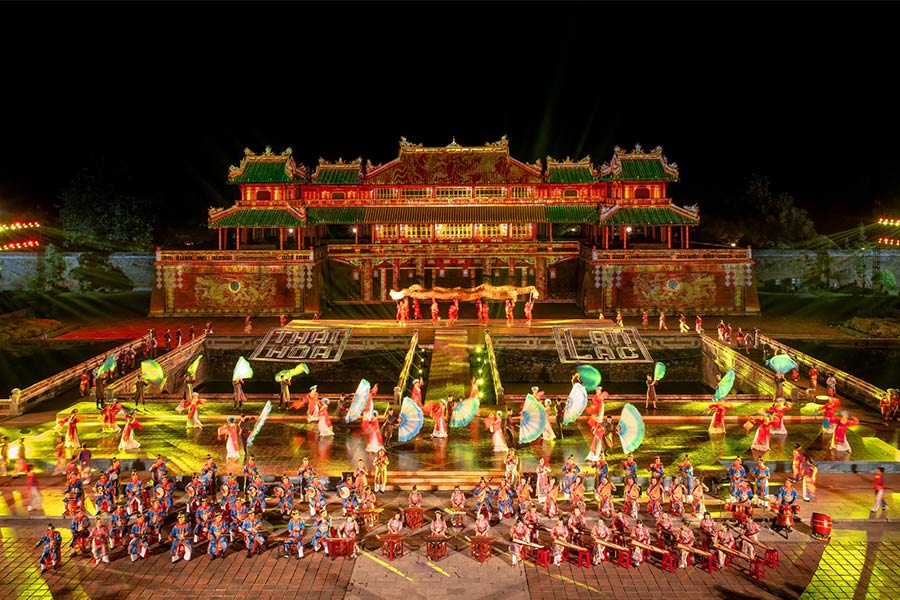
Explore more about Hue Royal Court Music with Asia King Travel
Despite the challenges and changes over time, efforts to preserve and revive Hue Royal Court Music persist, ensuring that this cultural treasure continues to resonate and inspire, bridging the past and present for generations to come. If you have any further inquiries about this cultural heritage of Vietnam or would like to see a performance of it, feel free to contact us. Asia King Travel always welcomes everyone to visit Vietnam and learn about the country's culture, and we are happy to help you in every way possible.